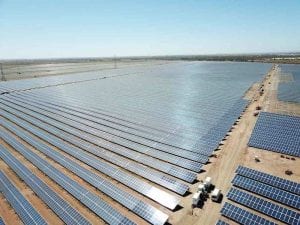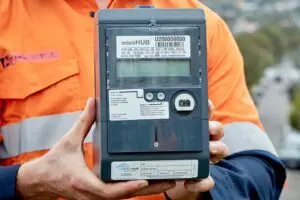Australia’s energy market rule maker is proposing a doubling of the administrated price cap in wholesale electricity markets as a key protection mechanism for consumers, as the national grid remains in the grip of inflated coal and gas prices.
The adjustment of the administered price cap (APC) from $300/MWh to $600/MWh was proposed in an urgent rule change request by Alinta Energy in July, as chaos gripped the National Electricity Market.
The APC, a “last resort” safety net to avoid sustained periods of high electricity prices, was imposed by the Australian Energy Market Operator for just the third time in the NEM’s history in mid-June.
At that time, AEMO took the unprecedented step of imposing the $300/MWh price cap on all of the mainland states of the NEM as price spikes of more than $10,000/MWh pushed them over the cumulative price cap.

It did not work as intended. Rather, coal and gas generators withdrew capacity because they could not cover their fuel input costs at that level – a situation that ultimately led AEMO to take the, again, unprecedented step of suspending the entire NEM.
In its rule change request, Alinta has argued that without the doubling of the APC, there is a “real risk” of a repeat of this market aberration – or worse, sudden supply shortages.
“If the relevant underlying market settings are not changed, there is a real risk that we will again see the same conditions that led to the unprecedented dysfunction and suspension of the market,” Alinta said in its submission.
“Left unaddressed, these impacts will not deliver outcomes in the long-term interests of consumers.”
AEMC backs proposed rule change
In a statement on Thursday, the AEMC said that after examining the issues, it was proposing an increase in the level of the APC to cover the short-run marginal costs of most generators in a range of credible scenarios.
“The AEMC … considers the increased APC will reduce reliance on the compensation process to a limited number of generators, required to operate during emergency situations,” the statement says.
“The higher APC will also improve incentives for storage to participate during emergency situations, further supporting the transition to net zero.”
Whether or not this will be the case remains to be seen – as does the outcome for consumers at a time when cost of living pressures are increasing from all angles, not least of all thanks through increasing costs of energy.
But something does have to give.
An energy market in crisis
Two major reports this week, one from the Australian Energy Regulator and one from the Energy Security Board, both highlighted the perilous state of the east coast energy markets and the impact this is having on homes and businesses.
The ESB, in its annual Health of the National Electricity Market Report, says “massive physical investment and purposeful, coordinated policy reform with an unrelenting focus on cost discipline is required,” to back some semblance of order.
“Events earlier this year highlighted the types of challenges we face and the bumps that can emerge due to a combination of factors including the pace and scale of change, our exposure to the volatility of global commodities markets and the accelerating retirement of thermal generation,” says ESB chair Anna Collyer.
“Managing those risks and delivering an orderly transition requires urgent market reform and regulatory settings that encourage efficient investment in our energy future.”

Challenging and costly
Similarly, the AER’s comprehensive State of the Energy Market 2022 report paints a picture of a system where maintaining security of supply has been “challenging and costly,” and not because of a lack of available electrons.
“NEM operations were not designed to cope with a withdrawal of such large volumes of capacity and AEMO was unable to sustain the level of manual resolution needed,” the report says of the events around the market caps and suspension.
“Following negotiations with generators and the resolution of plant outages, almost 4,000 MW of coal capacity
returned to the market.”

To this end, the AER says is investigating whether bidding behaviour breached any rules and legislation and whether generator conduct was consistent with “an efficient and competitive market serving the long term interest of consumers.” Conclusions to come in December.
In the meantime, however, the AEMC believes the doubling of the APC will go at least some way to protect consumers from extreme market conditions in the near future.
Protection from damaging blackouts
“We have decided to propose a prudent change to the market settings, to increase the APC to a level that will reduce the risk of costly and damaging blackouts, more effectively secure our electricity supply, and keep the system stable as we transition to more renewable energy,” said Collyer, who is also the AEMC chair.
“If this change had applied in June, it would have unlocked significantly more electricity generation – enough to power more than 2 million homes.”
“Importantly, this change would have no impact on wholesale prices during normal market conditions, but it would have a substantial benefit in protecting us from damaging blackouts and securing our reliable electricity supply during emergencies.”










